Story and photos by Anita Westervelt, Texas Master Naturalist
It’s getting toward the end of spring in the Valley, and newly planted gardens are looking colorful and healthy. Many uninvited yard plants are looking healthy, too, much to the consternation of many a gardener.
Four annoying lawn and garden plants everyone probably has but never considered naming — because to recognize them would seem too much like an open invitation for them to take up residency. These low-to-the-ground plants are tiny-leaved, have even tinier flowers and might just as well be ignored.
The most prevalent uninvited plant seems to be the ubiquitous tiny-flowered straggler daisy (Calyptocarpus vialis), also appropriately called prostrate lawn weed. It is in the Asteraceae Family.
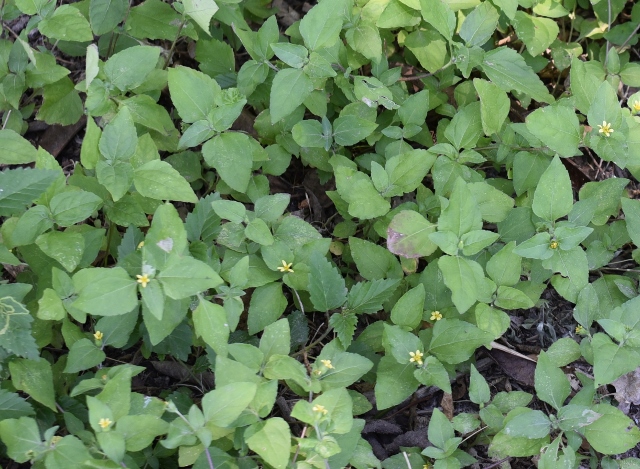

Although it tries to camouflage itself by nearly matching the color of grass, it soon begins sprawling over a larger and larger area. Hardly noticeable are the yellow flowers that barely reach to a quarter of an inch.
This plant blooms during all seasons in the Valley. It not only blooms, it produces fruit, seeds and new plants.
As with many sprawling and prostrate plants, there is one tap root. This plant can easily be pulled out of the soil at the root.
Another persistent, if not popular, plant is three-lobed false mallow (Malvastrum coromandelianum), also commonly called yard mallow. It is in the Malvaceae family. At first glance, it looks to be somewhat exciting, with its dark green, small, sturdy, shapely leaves — like a miniature buttercup almost.
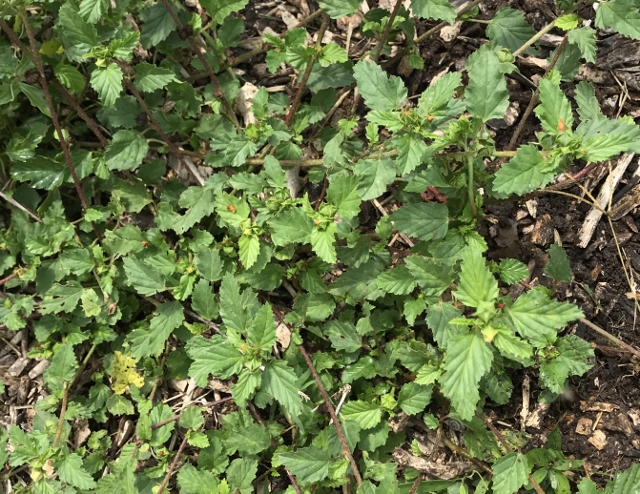
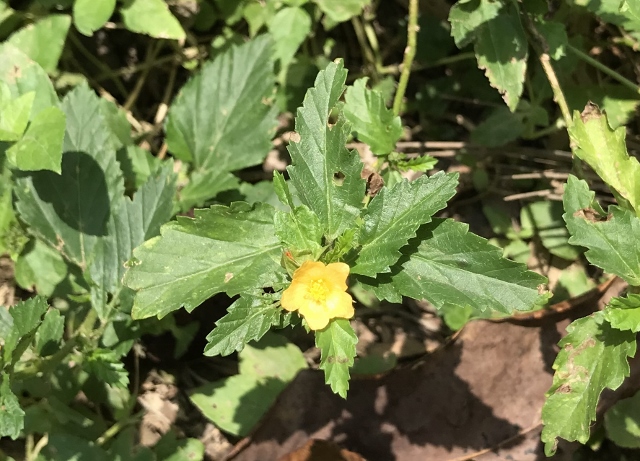
In the Valley, it is most likely to be perennial. The five-petaled yellow flowers are about a quarter of an inch in diameter. They open in late afternoon and bloom in all seasons. Left on its own, the three-lobed false mallow can grow to possibly three feet tall, more often it is around 18 inches and will topple, making it more of a sprawler.
The plant is an introduced species, native to an island in the Caribbean. It has a tenaciously strong tap root that doesn’t pull up by hand without breaking; the remaining root system will reproduce at the nodes. Best to loosen this one with a spade or trowel.
This plant is not without merit; it is one of the known food plants for common and tropical checkered-skipper butterfly caterpillars. The leaves may be eaten by rabbits and Texas tortoises.
A third plant likely to have sneaked onto your property unannounced is matted sandmat (Euphorbia serpens). It is in the spurge family and is a hairless annual, with a slender taproot. It is prostrate, frequently forming a roundish mat that can reach to nearly two feet in diameter. The prostrate stems root at the nodes. It blooms in all seasons, but you may have to squat down and view it with a magnifying glass to see the tiny white flowers.
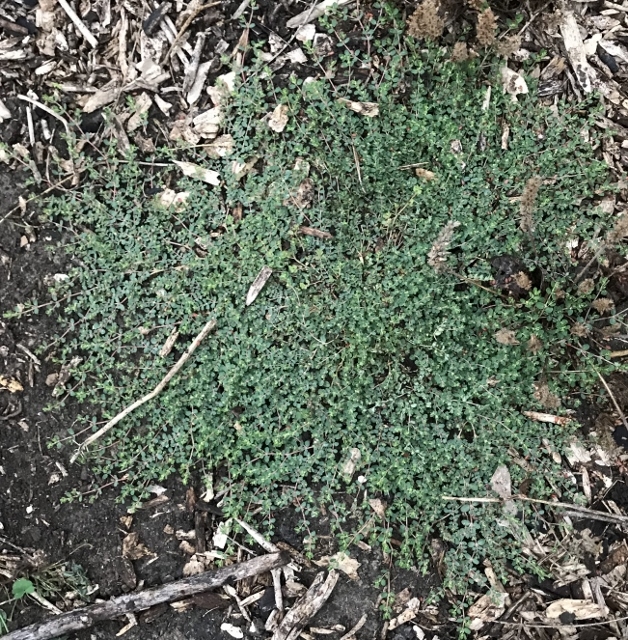
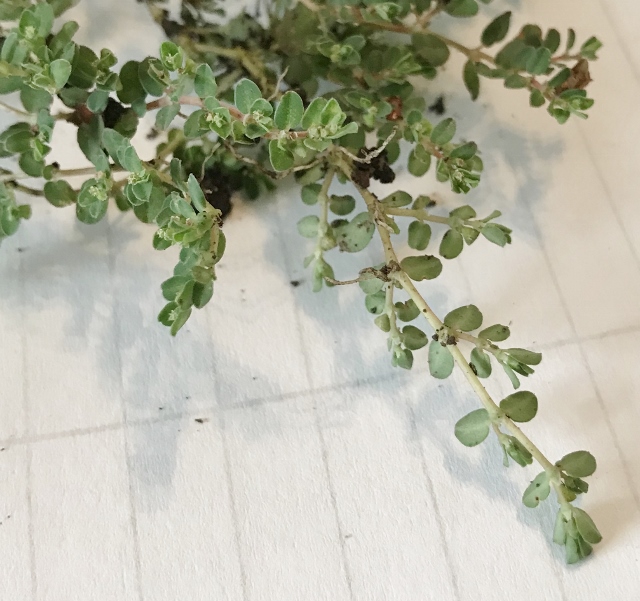
Matted sandmat is native to South America but it can be found on most continents as an introduced species. It seems to clear a void for itself on the soil. It’s easy enough to be pulled up at the taproot, which is in the center of the mat.
The final of the four interlopers is Jamaican Weed (Nama jamaicense), also called fiddleleaf. It is an annual prostrate and spreading plant in the waterleaf family. It has tiny, tube-like white flowers. Mature plants bloom spring and summer. The fruit is a capsule with numerous seeds. It is native in the Southern United States.
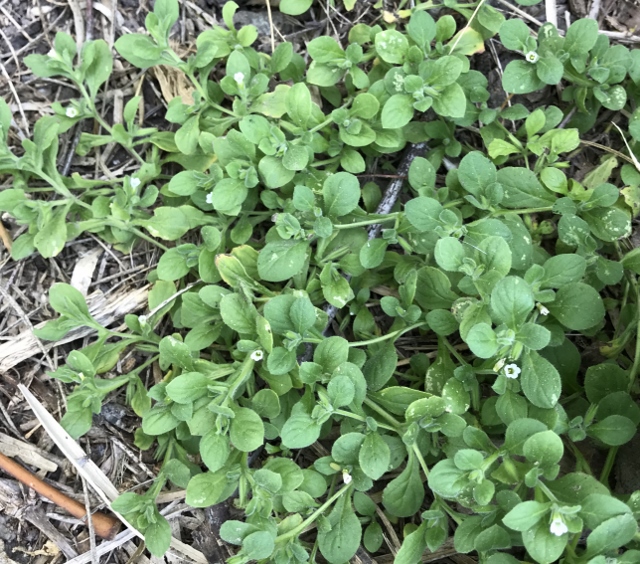
Of the four plants discussed, straggler daisy is the most prolific. The three-lobed false mallow is the most troublesome to remove. Matted sandmat and Jamaican weed are interesting plants and can be kept as a temporary, benign, ground cover, if desired.
The Internet is full of tips on how to rid a lawn or garden of unwanted upstarts, from keeping a lawn well fed and thick so it overtakes weeds, to herbicide use, organic methods and non-toxic products, to hiring a lawn care company.
There are tools for removing specific plants, like a weeding tool designed to extract plants with taproots. There are stand-up tools, hand tools, durable and ergonomic weeding tools, weed wands, and more aggressive devices to wage war on weeds using tactics such as a flame-thrower designed for garden use. Touted as one of the best ways to hand-weed a garden, a flame-weeder should come with a hearty caution in areas like the Valley, where wind and drought prevail.
In a small garden, hand pulling weeds before they get out of control is probably the cheapest option in clearing a garden of unwanted plants.
